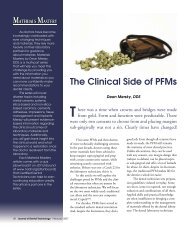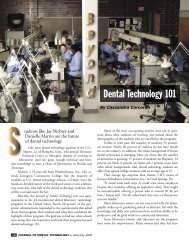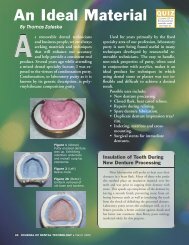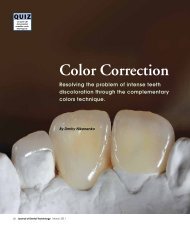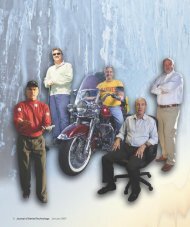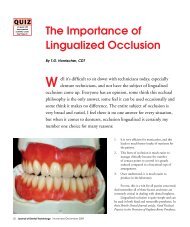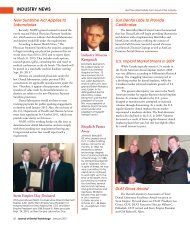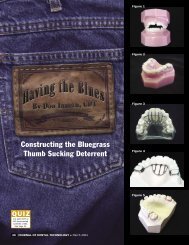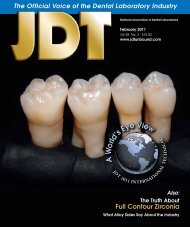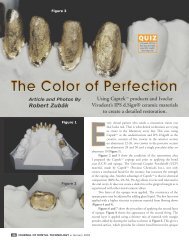Simplifying Implant Dentistry - JDT Unbound
Simplifying Implant Dentistry - JDT Unbound
Simplifying Implant Dentistry - JDT Unbound
You also want an ePaper? Increase the reach of your titles
YUMPU automatically turns print PDFs into web optimized ePapers that Google loves.
of the abutment. It is not likely thescrew of the healing abutment willcome loose but if it does this will causethe healing abutment to rise due to thehydraulic pressure introduced whenthe impression is taken. It is crucialthat there are no bubbles, rips, tearsor imperfections in this impressionaround the implant site. The reasonfor this is the scanner, which is used inthis CAD/CAM technology, may readthese imperfections as something else.The requirement for this impression isthat the healing abutment be at least1mm supra-gingival (Figure 6). Animpression coping is not indicatedin the production of a final Encode ®Abutment. Simply take a clean, clear,full arch impression of the healingabutment, followed by a full archimpression of the opposing arch and abite registration.The dental technician willpour up the impression with a lowexpansion die stone, free of bubbles(Figure 7). Articulate the models onan articulator within the confines ofthe mounting plates (Figures 8). Onlyarticulators compatible with AddessoSplit Plates, such as the Stratos 100articulator, can be used to replicatearticulation at the milling center. Forthis reason, articulators do not need tobe shipped, only the working models.Filling out the prescription is avital step in the Encode ® Completeproduction process and knowing yourdentist will help you with this process.Your dentist should answer severalquestions as completely as possible.How far sub-gingival should marginsbe buccal, interproximals, and lingual?Is a chamfer or shoulder marginpreferred? What should the abutmentwalls be parallel to and to what degreeof taper? Do you want to stretch any ofthe emergence profiles? Is the implantutilizing a platform switch design?These questions are filled out on theFigure 3 Figure 4Figure 5Figure 6Figure 7August/September 2009 Journal of Dental Technology 31




